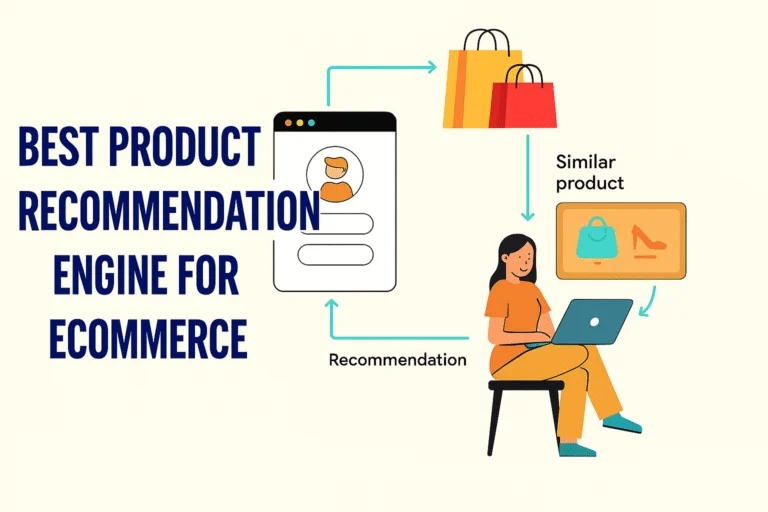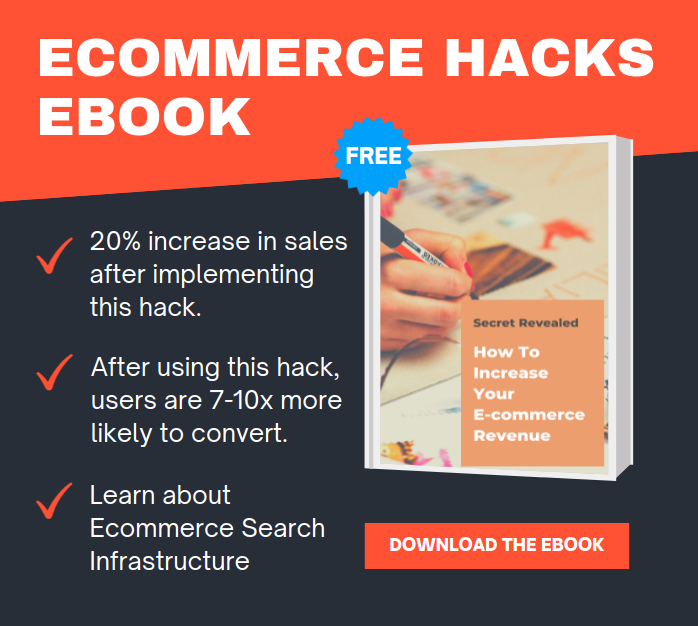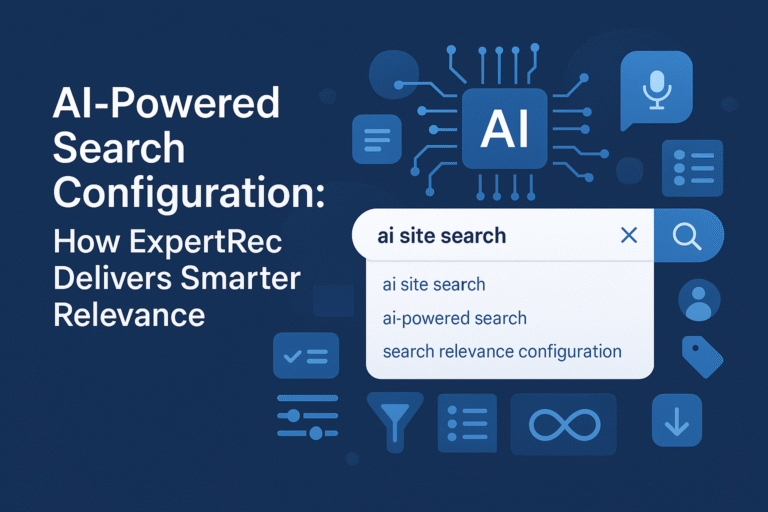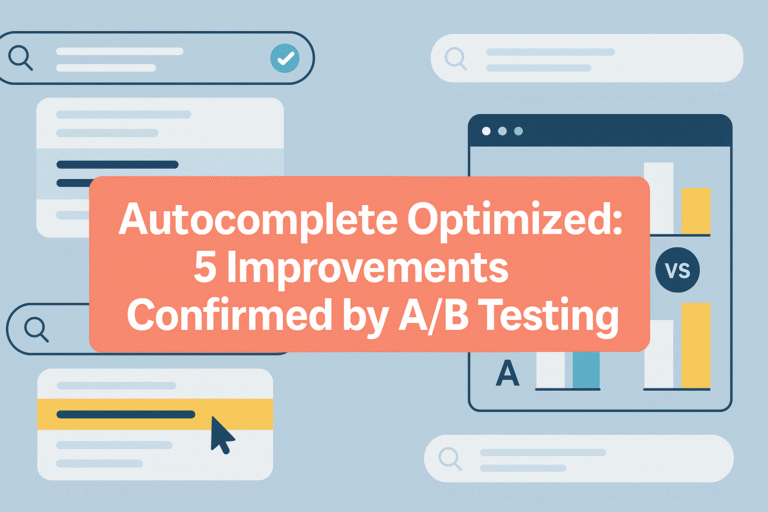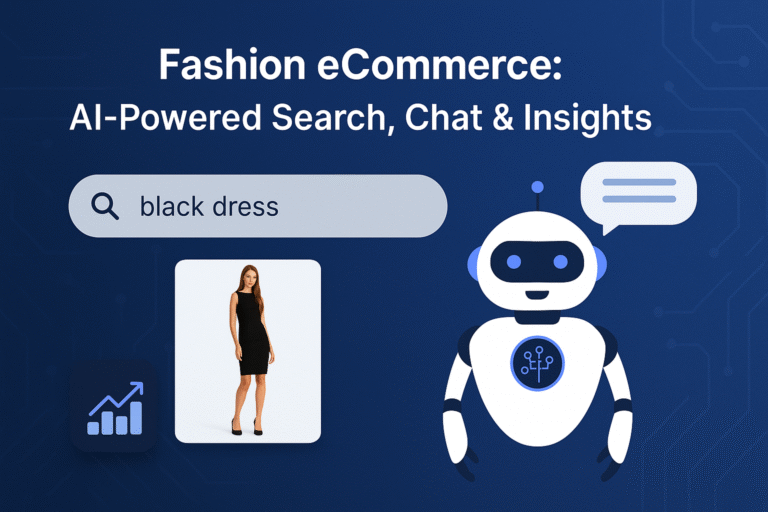Introduction: The Real Currency of eCommerce? Relevance.
In a world where attention is fleeting and competition is one click away, offering a massive product catalog isn’t enough. The modern shopper expects brands to know them, their taste, their timing, their intent.
This is where a product recommendation engine for eCommerce becomes indispensable. More than a convenience, it’s the neural network of modern shopping experiences. It makes the difference between a casual browser and a high-intent buyer, between a one-time transaction and lifelong loyalty.
Let’s dive deep into how this technology works, what it unlocks, and why Expertrec is redefining how personalization scales.
What Is a Product Recommendation Engine for eCommerce?
At its core, a product recommendation engine is an AI-driven system that learns from users’ behaviors and preferences to suggest the most relevant products in real-time.
In the eCommerce ecosystem, it takes shape across:
- Homepages: “Top Picks for You”
- Product Pages: “Similar Items” or “Complete the Look”
- Search Results: Dynamic suggestions based on query context
- Cart Pages: Upsells and frequently bought together
- Email Campaigns: Personalized product feeds
It does three things exceptionally well:
- Understands behavior: Clicks, searches, purchases, time spent
- Maps intent: Is the user exploring, comparing, or ready to buy?
- Matches products: Suggests items aligned with current and historical behavior
This isn’t just about upselling. It’s about creating a frictionless, tailored experience that feels like a one-on-one conversation.
The Core Technologies Behind the Magic
1. Collaborative Filtering
- Works by analyzing patterns across users
- Example: “Customers who bought this also bought…”
- Strength: Uncovers cross-category buying behavior
- Limitation: Cold start problem (requires user history)
2. Content-Based Filtering
- Focuses on product features and user preferences
- Example: If you liked a red leather jacket, you’ll see more red or leather items
- Strength: Works well with new users or products
- Limitation: Can over-personalize and lack diversity
3. Hybrid Models
- Combines both for deeper personalization
- Adapts in real time to evolving user intent
4. Contextual & Real-Time Data Processing
- Recognizes seasonality, promotions, and on-site behavior shifts
- Offers dynamic re-ranking of product suggestions
5. NLP & Search Integration
- Taps into query semantics to recommend relevant items even when search terms are vague or synonym-laden
Why It Matters: Measurable Business Impact
A robust product recommendation engine for eCommerce translates into direct, quantifiable wins:
| Metric | Impact |
|---|---|
| Conversion Rate | +15% to +70% when personalized recommendations are used |
| Average Order Value (AOV) | +20%-30% via cross-sells and upsells |
| Time on Site | +35% as shoppers browse deeper |
| Bounce Rate | -25% with dynamic, interest-driven content |
| Customer Lifetime Value | Multiplied through loyalty-driving relevance |
Strategic Implementation: The Where, When, and How
Homepage
- Use to greet returning users with familiar and fresh picks
- Highlight trending or seasonally relevant items
Product Page
- Display “Similar Products” or “Others Also Bought”
- Great for product alternatives and bundle creation
Cart Page
- Cross-sell related items (cables with electronics, accessories with apparel)
- Use urgency-driven prompts like “Last Chance to Add”
Email and Push Notifications
- Remind users of recently viewed or back-in-stock items
- Send curated lists based on browsing history
Search Pages
- Tie recommendations to search results based on real-time user queries and AI synonym expansion
How to Choose the Right Product Recommendation Engine for eCommerce
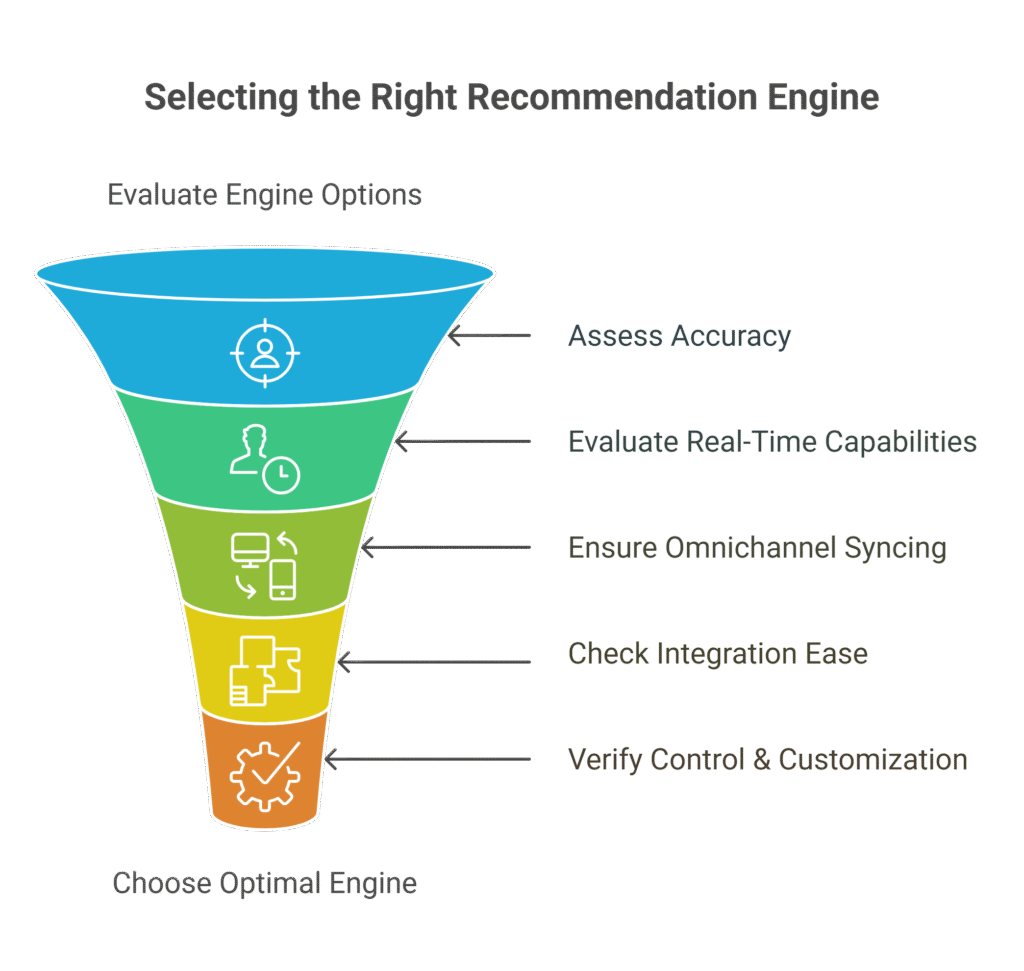
When evaluating tools, consider:
- Accuracy: How well does it adapt to your catalog and users?
- Real-Time Capabilities: Can it react instantly to user behavior?
- Omnichannel Syncing: Is it consistent across web, app, email, and more?
- Ease of Integration: Does it work with Shopify, Magento, WooCommerce, etc.?
- Control & Customization: Can you fine-tune recommendations by business logic?
Expertrec: Your AI-Powered Personalization Partner
Expertrec’s product recommendation engine for eCommerce is built to combine deep machine learning with no-fuss integration and full visual control.
Key Features:
- Real-Time Recommendations
- Seamless Integration with eCommerce Platforms
- Hybrid AI + Merchandiser Rule Systems
- Native Search + Recommendation Fusion
- A/B Testing + Analytics for Ongoing Optimization
Unlike many tools that are either black-box or overly complex, Expertrec empowers marketers and merchandisers to shape the engine’s logic while AI handles the heavy lifting.
It doesn’t just personalize. It contextualizes, monetizes, and humanizes your catalog.
Final Thoughts: It’s Not Just What You Sell. It’s What You Recommend.
In the digital aisles of eCommerce, your biggest opportunity isn’t just acquisition, it’s relevance.
A smart product recommendation engine for eCommerce becomes your most powerful conversion tool when implemented correctly.
With Expertrec, you’re not just offering products. You’re offering intelligent pathways to purchase that delight your customers and grow your revenue.
Frequently Asked Questions
1. What is a product recommendation engine for eCommerce?
A system that uses AI to suggest relevant products to users based on their behavior and preferences.
2. How does it improve conversion rates?
By making the experience more personalized and reducing the steps to find desirable items.
3. Can I use it across all devices?
Yes, advanced engines like Expertrec support omnichannel recommendation syncing
4. Is it suitable for small stores?
Absolutely. Expertrec offers scalable solutions that fit startups to enterprise businesses.
5. How do I measure its impact?
Track changes in conversion rate, AOV, bounce rate, and customer retention metrics after implementation.
